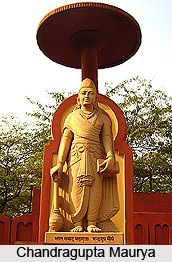 Kings were considered as devapriya or beloved of the Gods thereby emphasizing the importance of King`s role in Mauryan administration. They were also considered as priyadarsana or of gracious appearance. The throne looked for support to the priestly power. This is clear from the relation between Kautilya and Chandragupta Maurya. The king led a strenuous life and always intended the promotion of the well-being of his subjects. His daily routine was prescribed by the text-books. In Arthashastra he says that the monarch is to adjust his programme of work according to his capacity and inclination. He should always be prepared to deal with urgent matters and should not make himself inaccessible to persons who wished to meet him as this would lead to political disaffection.
Kings were considered as devapriya or beloved of the Gods thereby emphasizing the importance of King`s role in Mauryan administration. They were also considered as priyadarsana or of gracious appearance. The throne looked for support to the priestly power. This is clear from the relation between Kautilya and Chandragupta Maurya. The king led a strenuous life and always intended the promotion of the well-being of his subjects. His daily routine was prescribed by the text-books. In Arthashastra he says that the monarch is to adjust his programme of work according to his capacity and inclination. He should always be prepared to deal with urgent matters and should not make himself inaccessible to persons who wished to meet him as this would lead to political disaffection.
His first duty is diligence. Megasthenes has spoken about the arrangements in the royal palace and the precautions taken for ensuring the safety of the. Women performed all the services to the monarch. The risks of food poisoning and intrigues were carefully guarded against. When king issued from the palace, his route was guarded by armed soldiers. The princes were trained carefully and employed in situations suited to their capacity. He should not be an ill-disciplined prince, even if he happened to be the only son of the reigning monarch. He should be employed in the affairs of state or permitted to sit on the throne. Ill-natured princes should be put under restraint.
The king was assisted by a number of ministers. The priest in a separate and highly respected category by himself also assists the King. The ministers were men of proved ability and character. The king was free to consult a single minister or several ministers or the whole council according to the requirements.
This article is a stub. You can enrich by adding more information to it. Send your Write Up to content@indianetzone.com






































